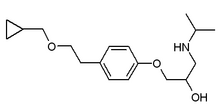The Joint Panel of the American Academy of Family Physicians (AAFP) and the American College of Physicians (ACP), in collaboration with the Johns Hopkins Evidence-Based Practice Center, systematically reviewed the available evidence on the management of newly detected atrial fibrillation and developed recommendations for adult patients with first-detected atrial fibrillation. The full report was published in the December 16, 2003 issue of Annals of Internal Medicine.
The guideline recommends pharmacologic management options for newly detected atrial fibrillation in adult patients, which is defined as the presence of symptoms or electrocardiographic evidence of atrial fibrillation. This guideline does not apply to patients with postoperative or postmyocardial infarction atrial fibrillation, patients with class IV heart failure, patients already taking antiarrhythmic drugs, or patients with valvular disease. The recommendations focus on rate control versus rhythm control, stroke prevention and anticoagulation, electrical cardioversion versus pharmacologic cardioversion, the role of transesophageal echocardiography in guiding therapy, and maintenance therapy.
Rate Control vs. Rhythm Control
Rate control with chronic anticoagulation is the recommended strategy for the majority of patients with atrial fibrillation. Rhythm control has not been shown to be superior to rate control (with chronic anticoagulation) in reducing morbidity and mortality and may be worse in some patient subgroups compared with use of rate control. Rhythm control is appropriate when based on other special considerations, such as patient symptoms, exercise tolerance, and patient preference.
Anticoagulation
Patients with atrial fibrillation should receive chronic anticoagulation with adjusted-dose warfarin, unless they are at low risk of stroke or have a specific contraindication to the use of warfarin (i.e., thrombocytopenia, recent trauma or surgery, alcoholism).
Aspirin may be useful for patients with atrial fibrillation and a low risk of stroke, but the evidence is inconclusive. There is currently insufficient evidence to support the use of low-molecular-weight heparin or other antiplatelet agents in the management of atrial fibrillation.
Efficacy of Different Agents for Rate Control
For patients with atrial fibrillation, the following drugs are recommended for their demonstrated efficacy in rate control during exercise and while at rest: atenolol, metoprolol, diltiazem, and verapamil (drugs listed alphabetically by class). Digoxin is only effective for rate control at rest and only should be used as a second-line agent for rate control in atrial fibrillation.
Side effect profiles for all medications should be reviewed with patients and can provide guidance in the choice of agents for individual patients. Combinations of digoxin plus diltiazem, atenolol, or betaxolol also have been shown to be effective at rest and with exercise. These combinations may be better reserved for situations when single-agent therapy has failed.
Acute Conversion
For patients who elect to undergo acute cardioversion to achieve sinus rhythm in atrial fibrillation, direct-current and pharmacologic conversion are appropriate options. While there are good data to support both options, there are no data on the efficacy of one method over the other because no head-to-head trials have compared them. Long-term effectiveness in maintaining sinus rhythm is moderate to low for both methods. Adequate safety data are not available to make recommendations about the setting of cardioversion.
Role of Echocardiography in the Acute Conversion of Atrial Fibrillation
Transesophageal echocardiography with prior shortterm anticoagulation followed by early acute cardioversion (in the absence of intracardiac thrombus) with postcardioversion anticoagulation versus delayed cardioversion with pre- and postanticoagulation are appropriate management strategies for patients who elect to undergo cardioversion. The choice between the two strategies should be based on patient preference and clinical situation, including contraindications to transesophageal echocardiography or availability of this technology.
Maintenance Therapy
Most patients who convert to sinus rhythm from atrial fibrillation should not be placed on maintenance therapy because the risks outweigh the benefits. In a select group of patients whose quality of life is compromised by atrial fibrillation, the recommended pharmacologic agents for rhythm maintenance are amiodarone, disopyramide, propafenone, and sotalol (drugs listed in alphabetical order). The choice of agent predominantly depends on specific risk of side effects based on patient characteristics. All agents have some potential for minor and serious side effects, suggesting the need for careful consideration of the relative risks and benefits of an aggressive approach to maintaining sinus rhythm versus the alternate strategy of rate control and stroke prevention before beginning therapy.
COPYRIGHT 2004 American Academy of Family Physicians
COPYRIGHT 2004 Gale Group



